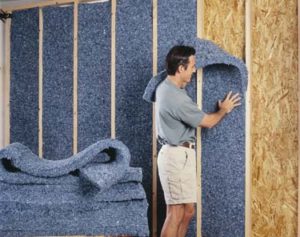When dealing with insulation, it is important you know some of the technical terms which can help you in choosing insulation materials. R-value is one of the common used metrics in insulation and it refers to the ability of the insulating material to resist the heat travelling through it. It is calculated by taking the ratio of the difference in temperature across an insulator over the heat flux through it. To the average homeowner, this may sound a bit technical and that is why the only thing you need to remember is that the higher the R-value, the better the insulation.
The R-value is dependent on the insulating material as well as its density and thickness. Some insulating materials are more resistant to temperatures compared to others. This is why R-value is the most critical metric when choosing insulating materials as opposed to thickness or weight.
Insulation Effectiveness Based on Installation
Where and how insulation is installed matters. For instance, compressed insulation may register lower R-values unless it is designed specifically to withstand pressure. When you layer heavy insulation on top of much lighter insulation, you can cause compression. An expected moisture can also lower the R-value substantially and weigh down the insulation. This leaves bare spots and gaps. In light of this reason, it is crucial to install your insulation according to the recommended best practices so as to achieve optimal thermal resistance.
R-Value Per Inch of Thickness
Materials have varying R-values per inch of thickness. For instance, the R-value of snow is R-1.0 per inch of thickness, whereas baled straw has an R-value of 1.5. Loose fill insulation such as cellulose or fiberglass has an R-value that ranges from 2.0 to 3.5. Rigid insulation has a much higher R-value from 3.5 to 8.0 or even higher. The insulating materials that top the list in terms of R-values are vacuum insulated panels. They have an amazingly high R-value in the regions of 30 per inch of thickness.
Assuming you have several layers of insulating materials piled together, getting their total R-value is simple; add their individual R-values. For instance, if you are insulating material is loose fill fiberglass which has a known R-value of 2.5, two inches of the same material will have an R-value of 5. However, this may vary depending on the manner in which the material is installed and the compression pressure piled on it.
The insulation you need for your home depends on the area in which you live as well as the location in your home where you plan to insulate. Floors do not need as much insulation as attics. Colder climates require lots of insulation compared to warmer areas like Florida.





